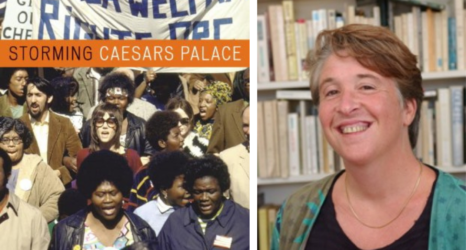Just when you thought we were over that whole separate-but-equal hullabaloo, Louisiana throws us another curve ball. One school district’s program to teach boys and girls in segregated classes has sparked an unprecedented constitutional battle.
The culture war was set in motion last year when Vermilion Parish School District launched a new program to teach boys and girls separately, based on theories of the supposed benefits of sex-segregated education.
To accommodate parents at Rene A. Rost Middle School who didn’t want their children segregated by sex, the district was forced to offer a separate coed track. But questions soon emerged about whether coeds were offered the same resources that segregated students had. According to a lawsuit filed by the ACLU, “all the ‘gifted and talented’ students were disproportionately placed into the single-sex classrooms,” while coed classes were dominated by special needs students. Was the school privileging students in the new segregated program, which embodies fashionable, if ideologically charged, educational theories? The suit argues that the program crossed a constitutional line:
The legal basis for our claims is simple: the program illegally discriminates against both boys and girls in violation of Title IX, which prohibits discrimination based on sex, including sex stereotypes, in schools that accept public funds. It also violates the 14th Amendment guarantee of equal protection, which prohibits the use of stereotypes about boys’ and girls’ learning styles and requires the existence of an extremely persuasive justification for separating boys and girls in public schools.
The classroom experience, as recounted through the litigation, smacks of both a throwback to the Victorian Era and the vogue of neo-conservative school reform:
Even the Rost reading assignments have been tailored to worn-out sex stereotypes about the reading preferences of boys and girls. The girls’ class was assigned a book about a love triangle, while the boys’ class was assigned a book about hunting. The girls’ book conveys the message that girls who are independent and take risks are rejected by society, and that elopement with a man is the best escape from society’s scorn. The boys’ book, by contrast, conveys the message that boys who are independent and take risks are rewarded with adventure and societal approval.
The case, which has moved up to an appeals court following a district court ruling in favor of the program, pits civil libertarians against the National Association for Single-Sex Public Education, which has helped seed single-sex school programs around the country.
Touting politically loaded concepts such as “Pursuit of power is a universal male trait. Pursuit of a comfortable environment is a universal female trait,” NASSPE and its founding theorist Leonard Sax cite research on the social and academic benefits of single-sex education for girls and boys. The underlying assumptions are: 1) boys are facing an educational crisis and should be guided with an “all-boys format,” and 2) girls, in the absence of disruptive or intimidating boys, are freer to transcend gender norms in school:
At every age, girls in girls-only classroom are more likely to explore ‘non-traditional’ subjects such as computer science, physics (or the primary school precursors to the physical sciences), woodworking, etc.
Good for them, but this begs the question of whether segregated institutions ultimately validate stereotypes in a sub rosa way—accepting the prevalence of gender oppression everywhere except in the school’s designated sexism-free zone. Even if the program encourages girls to break from “tradition” academically, would that offset the potential reinforcement of stereotypes through the very fact of physical and intellectual separation along conventional gender lines?
Besides, how useful will the segregated experience be when girls and boys are eventually thrown back into contact with each other? The NASSPE argues that separately schooled kids actually end up better-adjusted in sexual matters. They select an interesting example to demonstrate these positive outcomes:
[G]irls at single-sex schools have just as many heterosexual relationships as girls at coed schools. But girls in single-sex schools are more in control, have more autonomy in those relationships, and–as one result–are much less likely to experience an unwanted pregnancy.
Perhaps unwanted pregnancy really is statistically lower among girls who only go to school with girls. But if we start endorsing academic programs based on how well they regulate teens’ sexual behavior, doesn’t that creep beyond the essential mission of providing a good education?
And how exactly do we measure “achievement” in this debate? The NASSPE’s slam-dunk argument for gender segregation looks murky in light of the overall body of research, which is mixed and at best inconclusive. Rosalind C. Barnett and Caryl Rivers, authors of Same Difference: How Gender Myths Are Hurting Our Relationships, Our Children, and Our Jobs, wrote in a 2007 essay on boys-only education:
There is a consensus in the social sciences that, while certain gender differences in cognitive abilities do exist, they are not large, and there are more differences among boys and among girls than there are differences between the sexes.
Dubious science aside, this isn’t an academic debate for the ACLU. The central question in the lawsuit is whether a school district can impose rigid gender distinctions on young children without violating fundamental principles of civil rights and constitutional law.
When the ACLU filed its appeal earlier this year, Katie Schwartzman, Legal Director of the ACLU of Louisiana remarked:
Boys and girls will be less prepared to succeed in the world if they do not socialize, compete and collaborate with members of the opposite sex in school. Real life is not separated by sex any more than it is separated by race or religion.
The big lesson to be learned from the Vermilion case is that education’s purpose is to prepare children for the real world—for a society filled with diversity that must be negotiated, fraught with conflicts to overcome. Shouldn’t school help children understand that those differences aren’t something to be protected from, but embraced?
Photo from Flickr user dok1 under Creative Commons 2.0.





